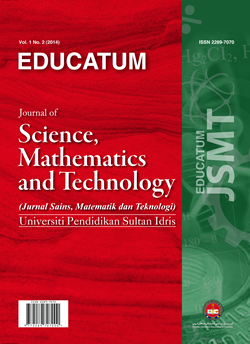Coherence Analysis of the Philippine Kto10 Numbers and Number Sense Most Essential Learning Competencies in the Time of Pandemic
DOI:
https://doi.org/10.37134/ejsmt.vol10.1.3.2023Keywords:
Coherence Analysis, Numbers and Number Sense, Most Essential Learning CompetenciesAbstract
The effect of the COVID-19 Pandemic brought changes in different sectors, particularly in education. There were shifts in the learning modalities, facilities, and schedules as well as in the integration of teaching-learning strategies. One of the solutions implemented by the Department of Education to assure that all the learning competencies will be covered for the entire school year was the transformation of the K to 10 Mathematics Curriculum into the identified Most Essential Learning Competencies (MELCs). This study determined the comparison between the K to 10 Mathematics Curriculum and the Most Essential Learning Competencies along Number and Number Sense. The descriptive analysis qualitative method was used to answer the problems set in the study. Analysis of data was done through mapping the Most Essential Learning Competencies in Numbers and Number Sense. Also, the qualitative approach to the analysis of the MELC is supported by the feedback and experiences of 10 mathematics teacher-informants (3Males, 7Females). Data suggest that from the original 120 listed learning competencies in Numbers and Number Sense K to 10 Mathematics Curriculum, only 83.33% of them have been retained in the MELC. The findings of the study also show the coherence of the MELC and the teaching emphasis on Numbers and Number Sense. Finally, future studies may be undertaken to further analyze the gaps in the analysis of the Most Essential Learning Competencies along Numbers and Number Sense.
Downloads
References
Department of Education (August 2016). K to 12 Curriculum Guide in Mathematics Grades 1 to 10. Retrieved from www.deped.gov.ph
Jordan, N. C., Glutting, J., and Ramineni, C. (2010). The importance of number sense to mathematics achivement in first and third grades. Learning and Individual Differences, ‘20(2), 82-88. doi: 10.1016/j.lindif.2009.07.004
Cheng, B., Wang, M., Moormann, J., Olaniran, B.A. & Chen, N.S. (2012). The effects of organizational learning environment factors on e-learning acceptance. Computers & Education, 58(3), 885-899. Elsevier Ltd. Retrieved May 25, 2022 from https://www.learntechlib.org/p/66819/.
Morita-Mullaney, T., Renn, J., & Chiu, M. M. (2020). Contesting math as the universal language: a longitudinal study of dual language bilingual education language allocation. International Multilingual Research Journal, 1-18. http://doi.org/10.1080/19313152.2020.1753930
Maloney, E. A., Ramirez, G., Gunderson, E. A., Levine, S. C., & Beilock, S. L. (2015). Intergenerational effects of parents’ math anxiety on children’s math achievement and anxiety. Psychological Science, 26(9), 1480-1488. https://doi.org/10.1177/0956797615592630
Department of Education (2020) MELC Guidelines, from, https://commons.deped.gov.ph/MELCS-Guidelines.pdf
Merriam, S. B. (2002). Introduction to qualitative research. Qualitative research in practice: Examples for discussion and analysis, 1(1), 1-17.
Krippendorff K. (1980) Content Analysis: An Introduction to its Methodology. Sage Publications, Newbury Park.
Downe-Wamboldt B. (1992) Content analysis: method, applications, and issues. Health Care for Women International 13, 313– 321.
Sandelowski M. (1995) Qualitative analysis: what it is and how to begin? Research in Nursing & Health 18, 371–375.
Kozikoglu, I., & Senemoglu, N. (2015). The content analysis of dissertations completed in the field of curriculum and instruction (2009-2014)
Montemayor, M. T. (2020, December 31). Education goes on amid Covid-19 thru DepEd's continuity plan. Retrieved from Philippine News Agency: https://www.pna.gov.ph/articles/1126058
Downloads
Published
Issue
Section
License
Copyright (c) 2023 Kelvin Carl Fulay, Alex P. Furio, Ryan V. Dio, Ritzelda A. Deri

This work is licensed under a Creative Commons Attribution-NonCommercial-ShareAlike 4.0 International License.





